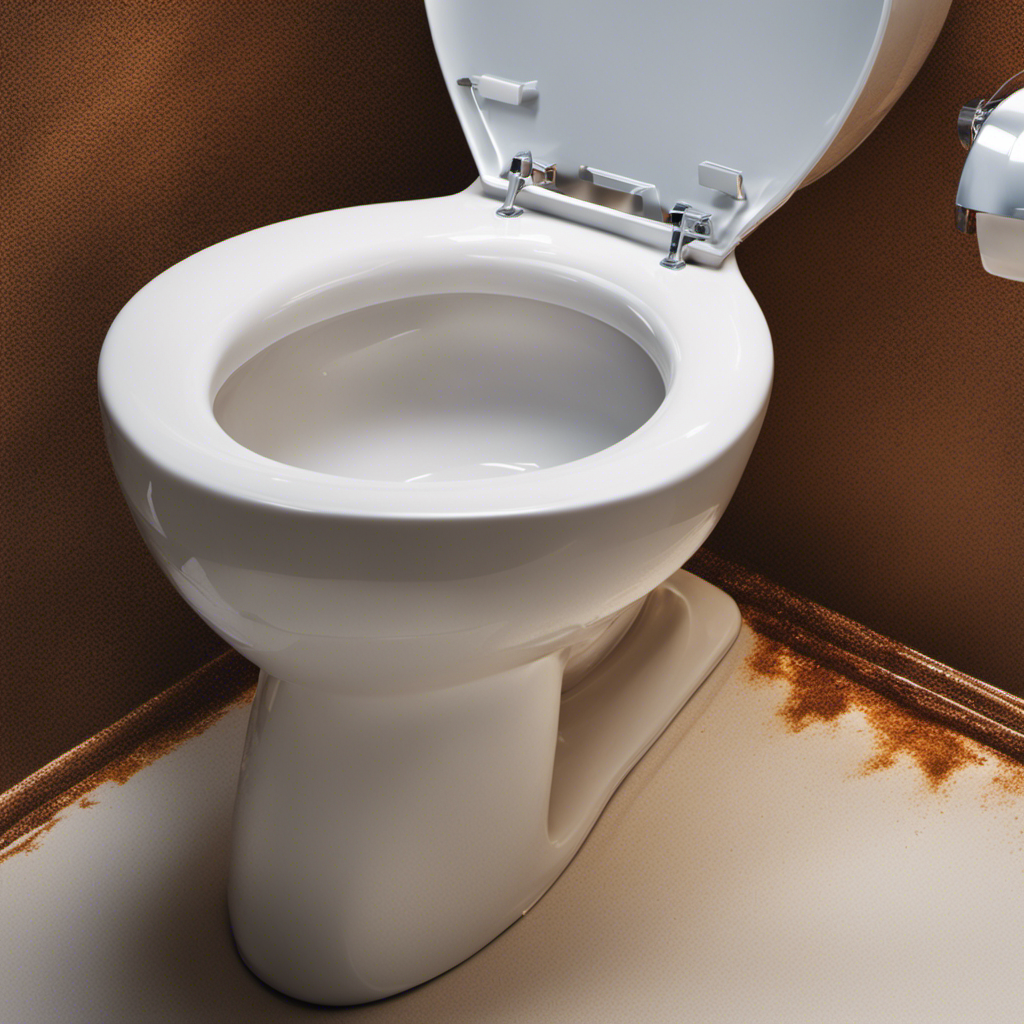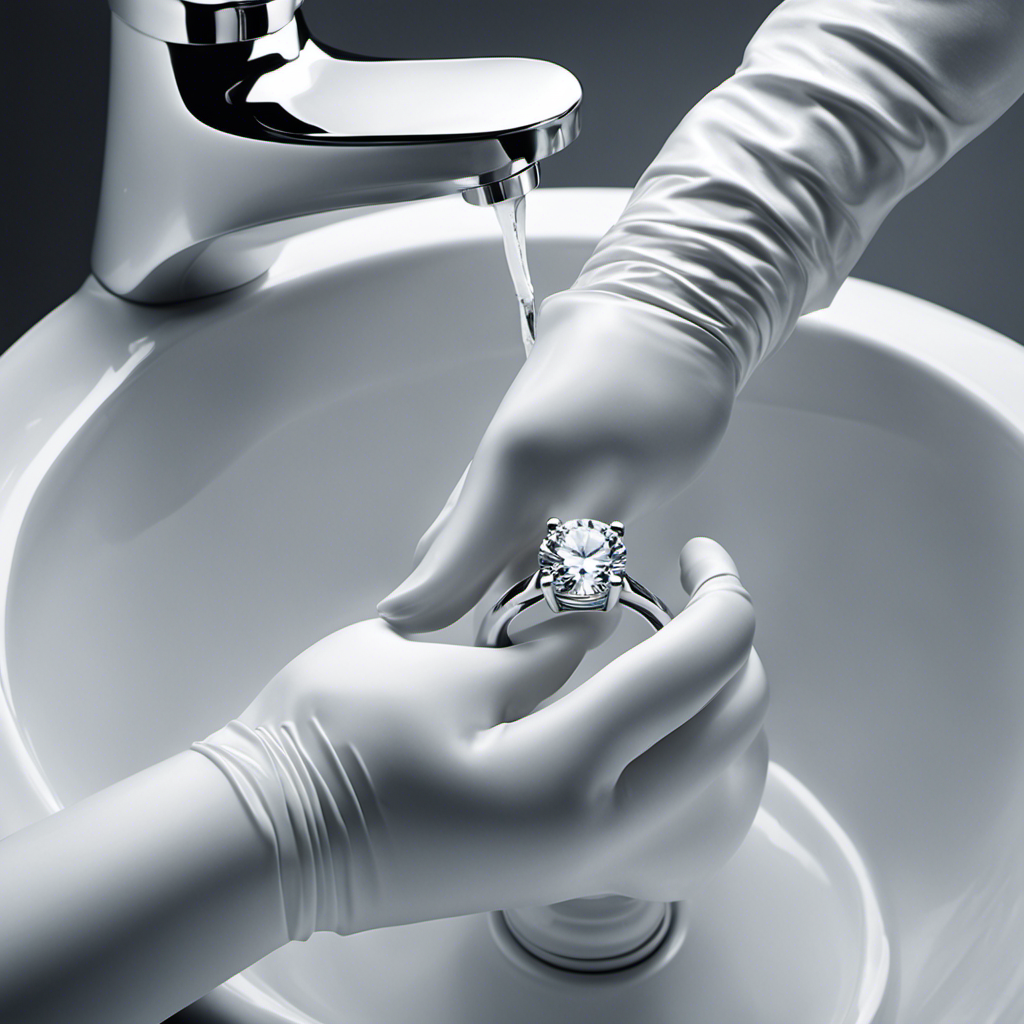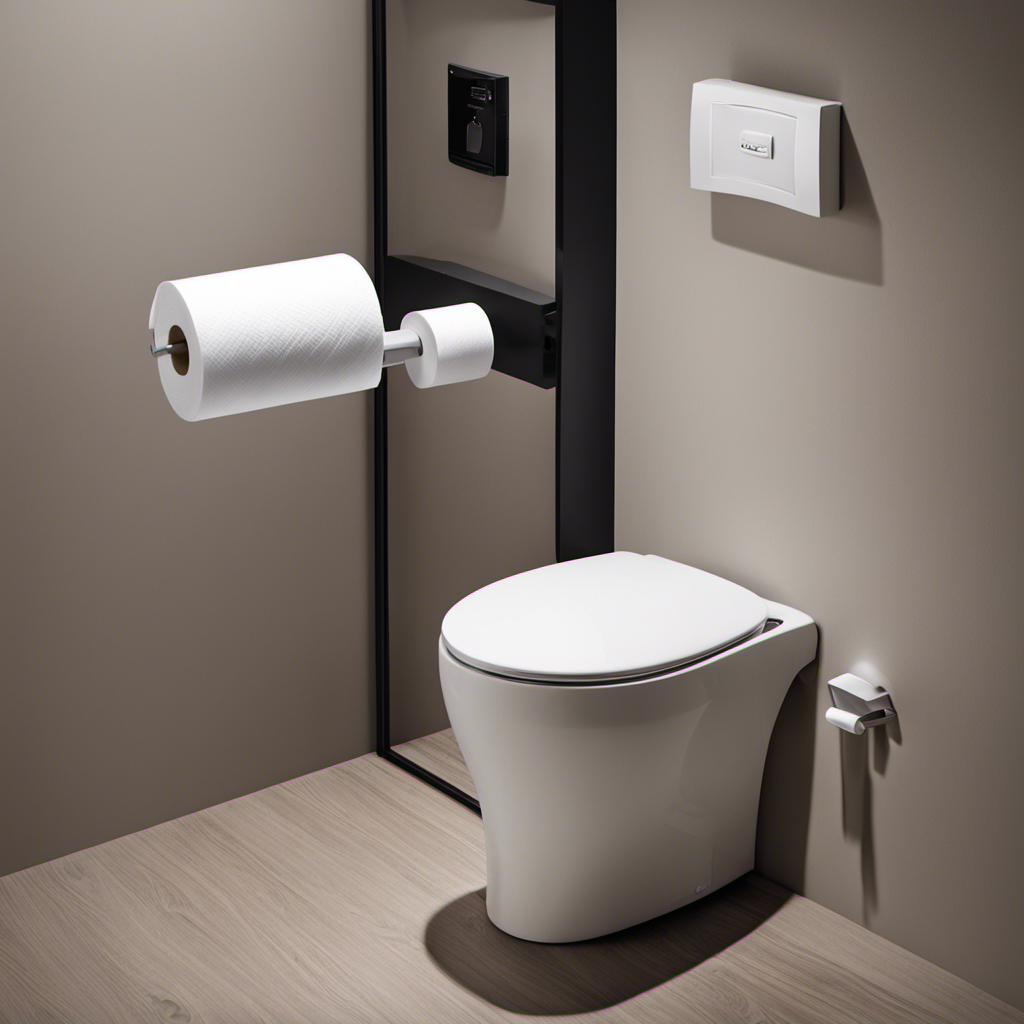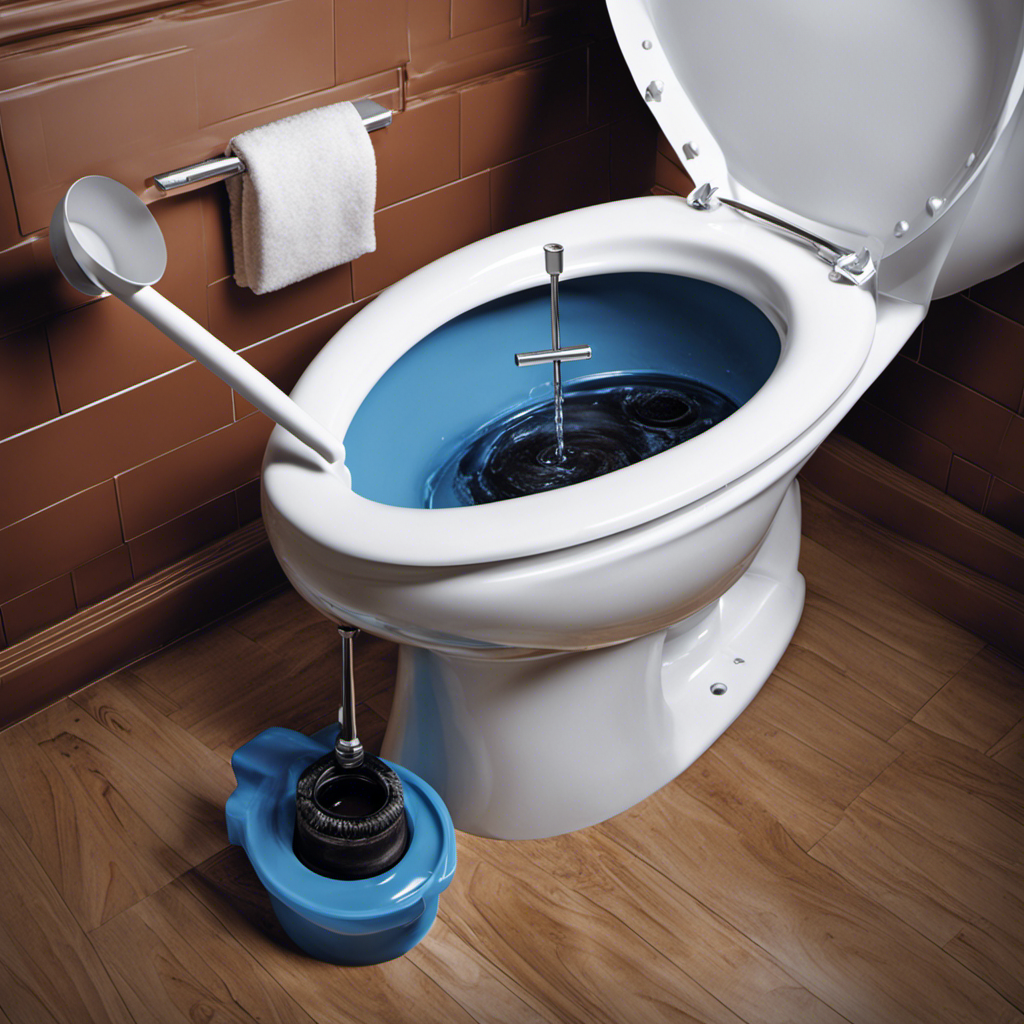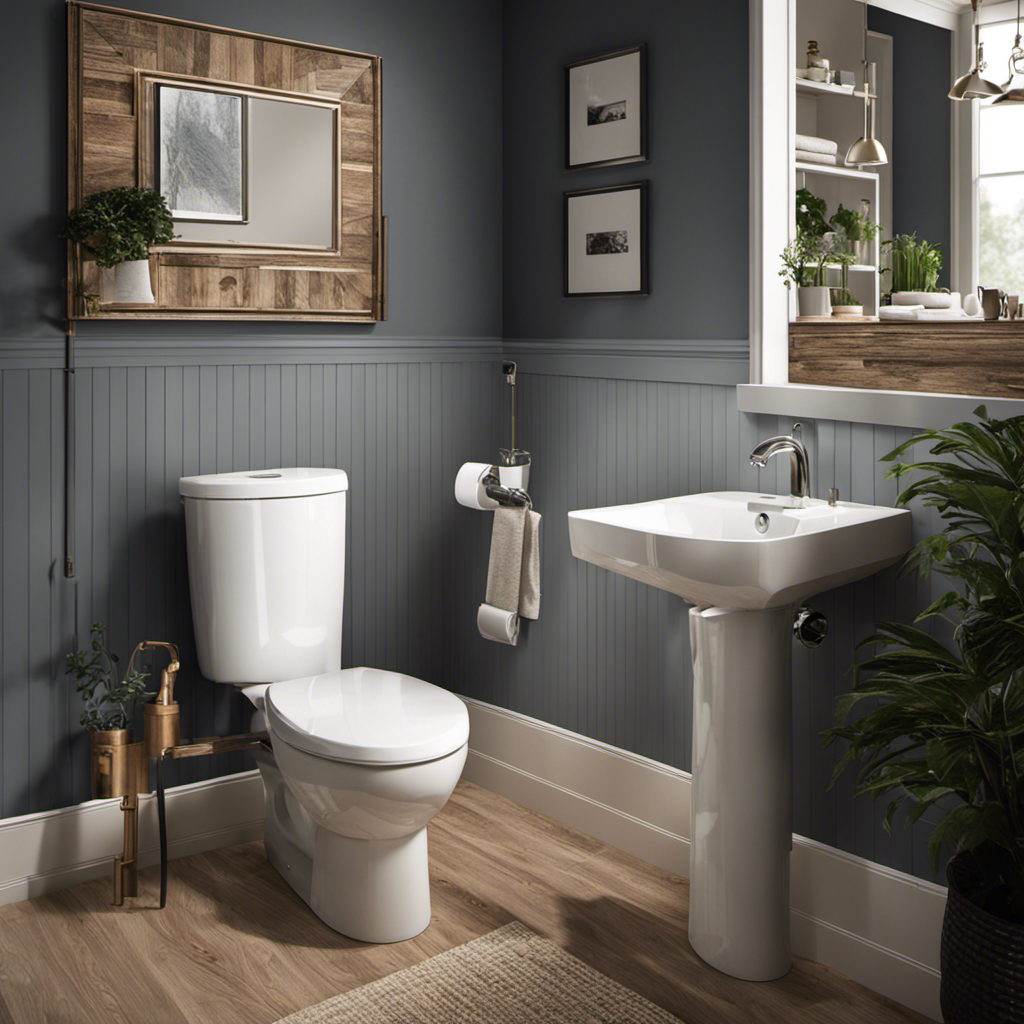Hey there!
Ever walked into your bathroom and been greeted by the unsightly sight of rust in your toilet? Trust me, I’ve been there too.
But fear not, because I’ve got you covered with this handy guide on how to get rid of that pesky rust. In just a few simple steps, you’ll be able to say goodbye to those rusty stains and hello to a sparkling clean throne.
So let’s roll up our sleeves and get to work!
Key Takeaways
- Old, corroded pipes and high levels of iron or minerals in the water supply can cause rust in toilet plumbing.
- Regular cleaning and maintenance, along with the use of rust-resistant materials and water softeners or filters, can help prevent rust formation.
- When removing surface rust from the toilet bowl, use a toilet cleaner with oxalic acid or hydrochloric acid, along with a sturdy scrub brush or pumice stone for stubborn stains.
- For stubborn rust stains or deeply embedded rust, natural rust removers like lemon juice, vinegar, or baking soda can be effective, but professional help may be necessary.
Identifying the Source of Rust in Your Toilet
If you’re wondering where the rust in your toilet is coming from, there are a few possible causes to consider.
One common cause of rust in toilet plumbing is old, corroded pipes. Over time, pipes can develop small cracks and holes, allowing water to come into contact with metal surfaces and cause rust.
Another cause could be the water supply itself. If your water contains high levels of iron or other minerals, it can lead to rust formation in your toilet.
To prevent rust in your toilet and other bathroom fixtures, it’s important to implement rust prevention techniques. Regular cleaning and maintenance, using rust-resistant materials for fixtures, and installing water softeners or filters can help reduce the chances of rust formation.
Gathering the Necessary Tools and Supplies
Once you’ve gathered all the necessary tools and supplies, you can start tackling the rust in your toilet. Here are the steps you need to follow to effectively remove rust and prevent it from coming back:
-
Protective gear: Put on rubber gloves and safety goggles to protect yourself from any harmful chemicals.
-
Toilet cleaner: Choose a cleaner specifically formulated to remove rust stains. Look for one that contains oxalic acid or hydrochloric acid.
-
Scrub brush: Use a sturdy brush with stiff bristles to scrub away the rust stains. Make sure it’s suitable for use on porcelain surfaces.
-
Pumice stone: For stubborn rust stains, a pumice stone can be effective in gently scrubbing away the rust without damaging the toilet bowl.
-
Rust prevention methods: After cleaning, consider implementing rust prevention methods such as using a toilet tank cleaner or installing a water softener to reduce iron content in the water.
Removing Surface Rust From the Toilet Bowl
To effectively remove surface rust from your toilet bowl, start by putting on protective gear such as rubber gloves and safety goggles.
Rust can be stubborn, but with the right techniques, you can restore your toilet bowl to its former glory.
One effective rust removal technique is to create a DIY toilet bowl cleaner using common household ingredients. Mix equal parts baking soda and vinegar to form a paste.
Apply the paste to the rusted areas of the toilet bowl and let it sit for about 15 minutes. Then, scrub the area with a toilet brush or a scrub brush until the rust is removed.
Rinse thoroughly with water and repeat if necessary. This method is not only effective but also safe and cost-efficient.
Say goodbye to unsightly rust stains and hello to a sparkling clean toilet bowl.
Treating Stubborn Rust Stains in the Toilet
Treating stubborn rust stains in the toilet can be challenging, but with the right techniques and products, you can effectively remove them. Here are some practical tips to help you tackle those pesky rust stains:
-
Using natural rust removers in the toilet bowl can be an effective and safe way to remove rust stains. Lemon juice, vinegar, and baking soda are popular options that can be easily found in your kitchen pantry.
-
Seeking professional help for severe rust stains in the toilet is advisable. If the rust stains are deeply embedded or if you have tried multiple methods without success, it may be time to call in the experts. Professionals have access to stronger chemical cleaners and specialized tools that can get the job done.
Preventing Future Rust Build-up in Your Toilet
When it comes to preventing future rust build-up in your toilet, regular cleaning and maintenance are essential.
To prevent rust corrosion, it’s important to keep your toilet clean and dry. After each use, make sure to flush the toilet and wipe down any excess water or moisture.
Avoid using harsh chemical cleaners as they can damage the toilet’s surface and contribute to rust formation. Instead, opt for natural rust removal methods such as using vinegar or lemon juice. These acidic substances can help dissolve rust and prevent it from reoccurring.
Additionally, consider using a toilet tank cleaner that contains rust inhibitors to further protect against corrosion.
Conclusion
In conclusion, banishing rust from your toilet requires a keen eye, proper tools, and a determined spirit.
Just as a knight battles the forces of darkness, we must arm ourselves with a scrub brush and rust remover to vanquish the unsightly stains in our porcelain kingdom.
With patience and perseverance, we can restore our toilet’s gleaming armor and maintain its pristine condition for years to come.
Remember, the battle against rust is an ongoing one, but with our newfound knowledge, we are equipped to conquer it.
So, go forth and reclaim your throne!
